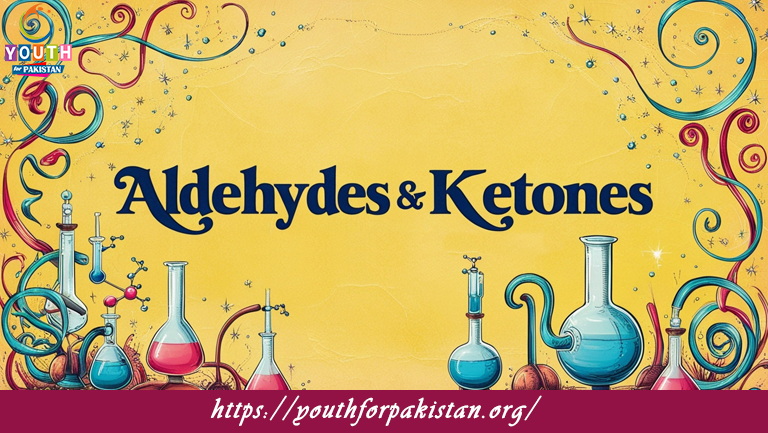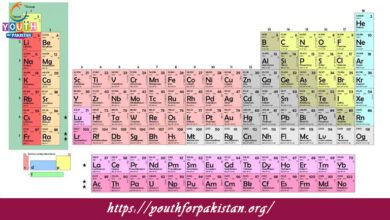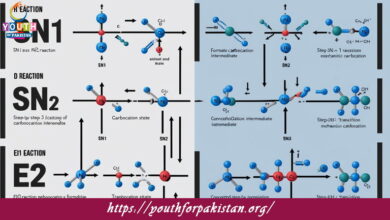Aldehydes & Ketones Reactions MDCAT Quiz with Answers

Aldehydes & Ketones Reactions MDCAT Quiz are important in understanding the behavior of these compounds in organic chemistry. MDCAT students must master the key reactions of aldehydes and ketones in order to excel in the exam. Both functional groups share the carbonyl group (C=O), which plays a central role in their reactivity. Their reactions are diverse and are often involved in nucleophilic addition and substitution processes.
Nucleophilic Addition Reactions: Addition of Grignard Reagents: One of the most significant reactions of both aldehydes and ketones is their reaction with Grignard reagents (RMgX). In this reaction, the Grignard reagent adds to the carbonyl carbon, forming an alkoxide intermediate. This intermediate, upon hydrolysis, is converted into an alcohol. For aldehydes, this results in a secondary alcohol, while ketones form a tertiary alcohol. Thus, acetone (CH₃COCH₃) reacts with methylmagnesium bromide (CH₃MgBr) to form tert-butyl alcohol.
Reduction by Hydride Donors: The most common reducing agents for aldehydes and ketones are hydride donors like sodium borohydride (NaBH₄) and lithium aluminum hydride (LiAlH₄). Aldehydes are reduced to primary alcohols, while ketones are reduced to secondary alcohols. This reaction is very important in organic synthesis because it allows the selective reduction of carbonyl compounds.
Condensation Reactions:
Aldol Condensation: The hallmark reaction for both aldehydes and ketones is aldol condensation, where either an aldehyde or a ketone undergoes nucleophilic addition to itself— Intramolecularly —or to another molecule of the same kind. This gives a β-hydroxy aldehyde or ketone, which on heating, by the process of dehydration, gives an α,β-unsaturated carbonyl compound. For example, acetaldehyde can undergo aldol condensation to form crotonaldehyde:.
Claisen Condensation: A reaction related to aldol condensation is the Claisen condensation, which is the reaction of esters with strong bases to form β-keto esters. Although it mainly deals with esters, aldehydes and ketones can also react under certain conditions.
Electrophilic Substitution Reactions:
Nitration and Halogenation: The carbonyl group of aldehydes and ketones can make an aromatic ring more reactive toward electrophiles, thus allowing the aldehydes and ketones to undergo electrophilic substitution reactions. For example, bromination of benzaldehyde forms 2-bromobenzaldehyde while nitration of acetophenone forms 3-nitroacetophenone. The substituent attached to the aromatic ring directs the position of substitution depending on whether the substituent effect is electron-withdrawing or electron-donating.
Reduction to Alcohols: As noted above, aldehydes and ketones can both be reduced to alcohols using a variety of reducing agents such as NaBH₄ or LiAlH₄. These reagents selectively reduce the carbonyl group without affecting other functional groups present in the molecule.
Reactions with Alcohols:
Acetal and Ketal Formation: Aldehydes and ketones react with alcohols in the presence of an acid catalyst to form acetals (from aldehydes) and ketals (from ketones), respectively. They are stable compounds, which may be hydrolyzed to form the corresponding aldehydes and ketones under acidic conditions. The reaction is indeed used quite frequently for the protection of carbonyl compounds during multi-step synthetic processes.
Understanding the variety of reactions that aldehydes and ketones undergo is essential for predicting their behavior in organic chemistry. These reactions are fundamental to both laboratory and industrial applications.
Quiz: Test Your Knowledge of Aldehydes & Ketones Reactions
Our MDCAT Quiz on aldehydes and ketones reactions will help you determine how well you understand the various reactions they undergo, such as nucleophilic addition, condensation reactions, and electrophilic substitution. The quiz includes questions on identifying reaction mechanisms and products, ensuring you’re prepared for the MDCAT exam.
Free Flashcard: Key Insights on Aldehydes & Ketones Reactions
Our free flashcard set on aldehydes and ketones reactions provides a quick reference to the most common reactions, such as Grignard reactions, aldol condensations, and the formation of acetals. These flashcards will help reinforce your knowledge and ensure you’re well-prepared for the MDCAT exam.
Experience the real exam environment with our expertly designed collection of over 25,000 MCQs MDCAT Mock Tests.






